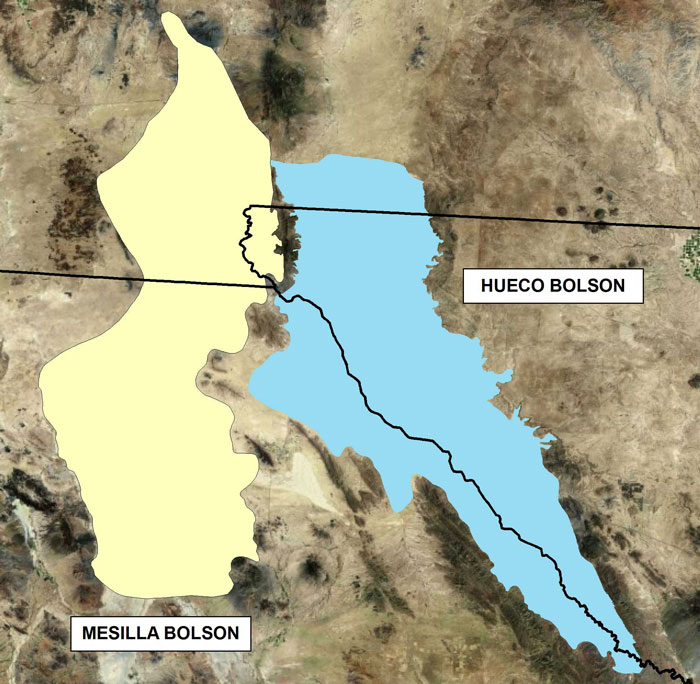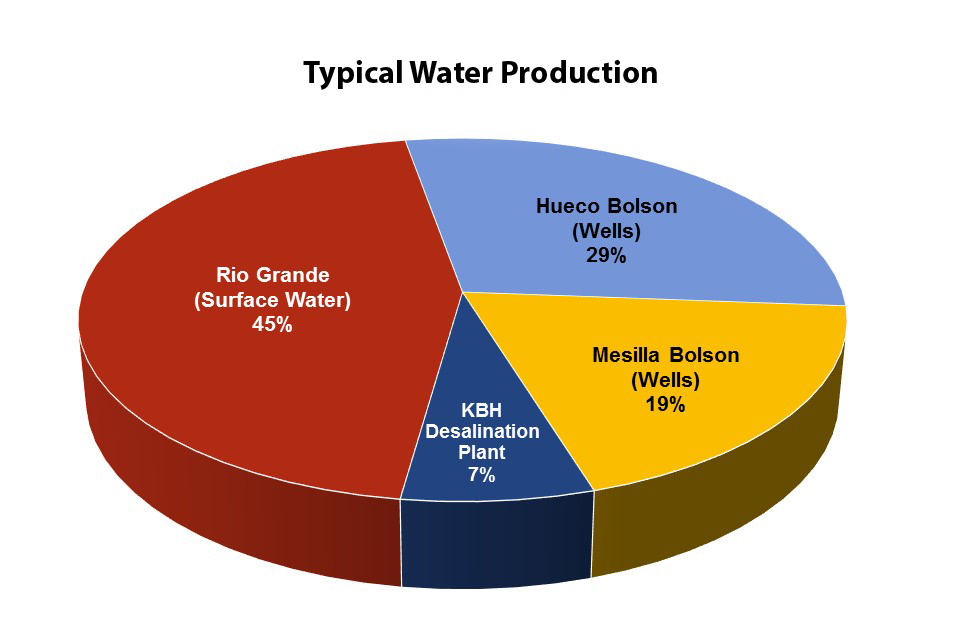Our Aquifers
Straddling the Franklin Mountains, the Hueco Bolson (to the east) and the Mesilla Bolson (to the west) together are considered to be a major aquifer by the Texas Water Development Board. The aquifers stretch north into New Mexico and south into Mexico.
The bolsons have layers of silt, clay, sand and gravel to filter and hold the water in the aquifer. The Hueco Bolson measures about 9,000 feet in depth, while the Mesilla Bolson is about 2,000 feet in depth. Although the Hueco and Mesilla bolsons share similar geology, very little water travels between them.

Three states, two countries, one vital resource
The Hueco Bolson is the principal aquifer for both El Paso and Ciudad Juarez in Chihuahua, Mexico. About 90 percent of water drawn from the aquifer is for public municipal use, serving homes and businesses. In a normal year, El Paso relies on the aquifer for about half of its water supply.
Heavy aquifer pumping up to the late 1980s resulted in significantly reduced water levels in most of the Hueco Bolson and some of the Mesilla. Since then, however, observation wells indicate that water levels have stabilized.
El Paso Water has taken steps to reduce pumping in recent decades through major conservation efforts, increasing use of river water and using treated wastewater to help replenish the aquifer.

Salinity levels increasing
Heavy aquifer use also decreased water quality and increased salinity. Salinity typically increases to the south and in the shallower parts of the aquifer.
The upper portion of the Hueco Bolson contains fresh to slightly saline water, ranging from less than 1,000 to 3,000 milligrams per liter of total dissolved solids.
For more technical information on the aquifer, see the Hueco Bolson Groundwater Conditions and Management Report, March 2004.
